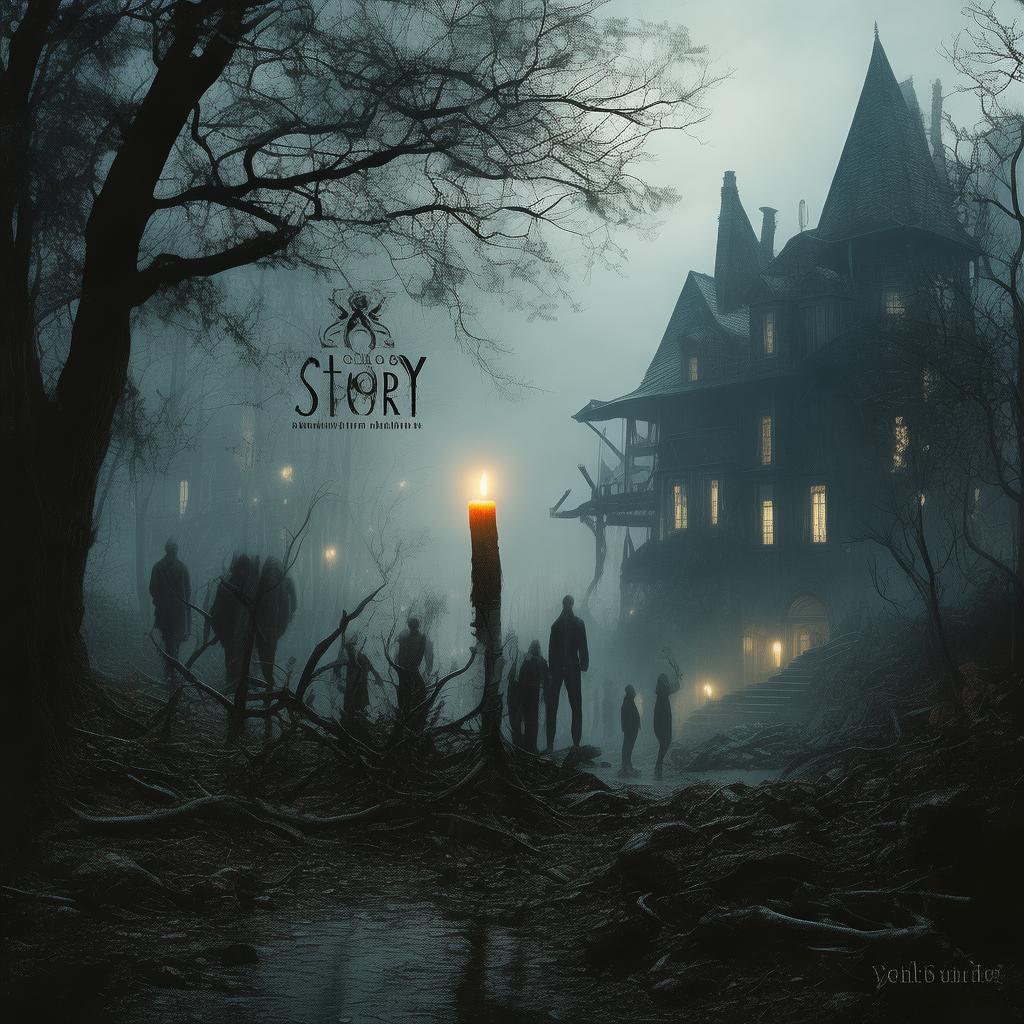The Haunting Critique: Unraveling the Ghostly Plot
The night was as silent as the grave, and the town of Willow's End lay shrouded in mist. The old inn, once a bustling hub of activity, now stood abandoned, its windows like empty sockets watching over the desolate street. Inside, the author, Eliza Thorne, sat hunched over her desk, her fingers dancing across the keyboard. She was writing a novel, a chilling tale of ghosts and mystery that seemed to take on a life of its own.
Eliza had always been drawn to the supernatural, her imagination a fertile ground for tales of the unknown. Her latest work, "The Haunting Critique," was her magnum opus, a novel that would not only captivate readers but also challenge the boundaries between reality and fiction. As she crafted the ghostly plot, she found herself becoming more and more invested in the story, her characters taking on a life of their own.
It was during one particularly intense writing session that Eliza's phone buzzed. She glanced at the screen, a name she knew all too well: Mrs. Evelyn Blackwood. Evelyn was one of the few residents left in Willow's End, a woman who had lived there her entire life. Her house, a quaint, old cottage on the edge of town, was said to be haunted.
Eliza's curiosity was piqued. She had never met Evelyn, but the name held a certain intrigue. She decided to pay her a visit, hoping to gather some local color for her novel. As she approached the cottage, the air seemed to grow colder, and the mist thicker. The door creaked open, and Evelyn emerged, her eyes wide with a mixture of fear and excitement.

"Eliza Thorne?" she asked, her voice trembling.
"I am," Eliza replied, stepping inside. The cottage was dimly lit, the walls adorned with faded portraits and old, dusty books. Evelyn led her to the living room, where a large, ornate mirror stood against the wall.
"This mirror," Evelyn began, "is said to be enchanted. It's said that if you look into it, you'll see the truth."
Eliza's heart raced as she approached the mirror. She took a deep breath and looked into its depths. What she saw was chilling—a figure, cloaked in shadows, standing behind her, its eyes gleaming with malice.
"Who is that?" Eliza demanded, spinning around.
Evelyn's face paled. "That's your character, Eliza. Your novel is coming to life."
As days turned into weeks, Eliza found herself increasingly entangled in the ghostly plot of her own creation. Characters from her novel began to appear in her waking life, their actions and dialogues eerily mirroring the pages of her book. The once vibrant town of Willow's End had become a place of dread, with each neighbor a potential character in her unfolding drama.
One evening, as Eliza walked through the town, she encountered a young boy, his eyes filled with fear. "Help me," he whispered, pointing to a nearby house.
Intrigued, Eliza followed him to the house, where she found a woman chained to the floor, her eyes wild with terror. The woman, it turned out, was a neighbor of Evelyn's, and she had been missing for weeks. The police had no leads, but Eliza had a feeling that the answer lay in her novel.
She delved deeper into her writing, uncovering clues that pointed to a long-buried secret within the town. As she pieced together the puzzle, she realized that the ghostly plot of her novel was not just a story but a warning. The town of Willow's End was in danger, and it was up to Eliza to save it.
The climax of her story arrived with a bang. In a dramatic turn of events, Eliza discovered that the ghostly figure she had seen in the mirror was not a character but her own reflection, a manifestation of her deepest fears and insecurities. The woman chained to the floor was Evelyn's long-lost daughter, who had been held captive by a twisted individual who had been using the town's supernatural legends to control the residents.
With the help of the police and her neighbors, Eliza managed to rescue Evelyn's daughter and apprehend the criminal. The town of Willow's End began to heal, its residents finding solace in the fact that the supernatural was just a story, and the truth was far more terrifying.
As the dust settled, Eliza looked back on her adventure with a mix of relief and wonder. Her novel had become more than just a work of fiction; it had become a reflection of her own life, a testament to the power of storytelling and the resilience of the human spirit.
The ending of her novel was bittersweet, leaving readers to ponder the line between reality and imagination. Eliza Thorne had not only written a ghost story but had also become a part of one, proving that sometimes, the most haunting tales are those that we weave into the fabric of our own lives.
Eliza's story spread like wildfire, sparking discussions and debates about the nature of reality, the power of words, and the delicate balance between the supernatural and the human experience. As readers shared their thoughts and theories, the story of "The Haunting Critique" became a legend in its own right, a haunting tale that would be told for generations to come.
✨ Original Statement ✨
All articles published on this website (including but not limited to text, images, videos, and other content) are original or authorized for reposting and are protected by relevant laws. Without the explicit written permission of this website, no individual or organization may copy, modify, repost, or use the content for commercial purposes.
If you need to quote or cooperate, please contact this site for authorization. We reserve the right to pursue legal responsibility for any unauthorized use.
Hereby declared.









